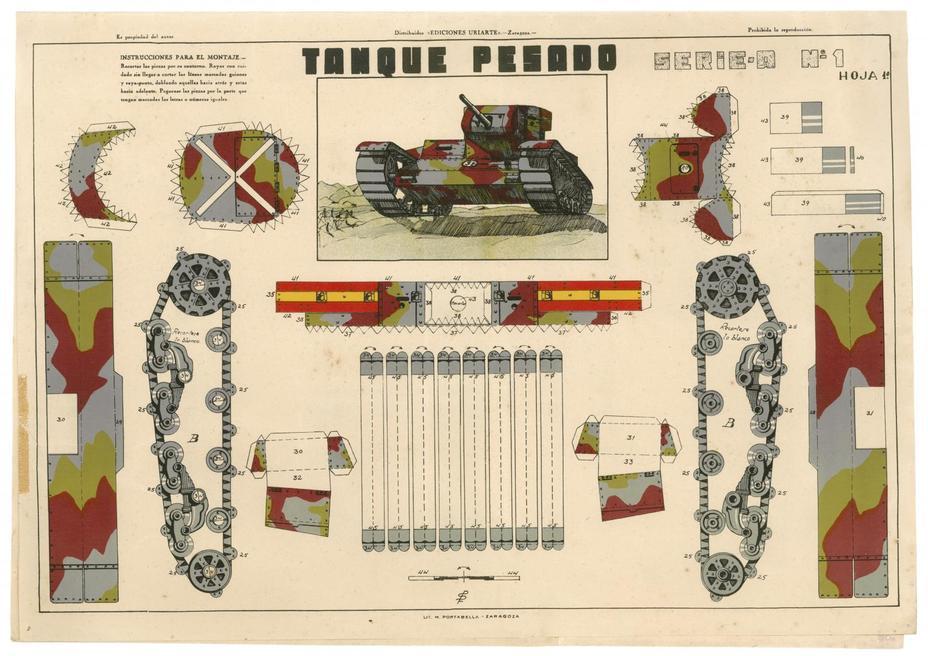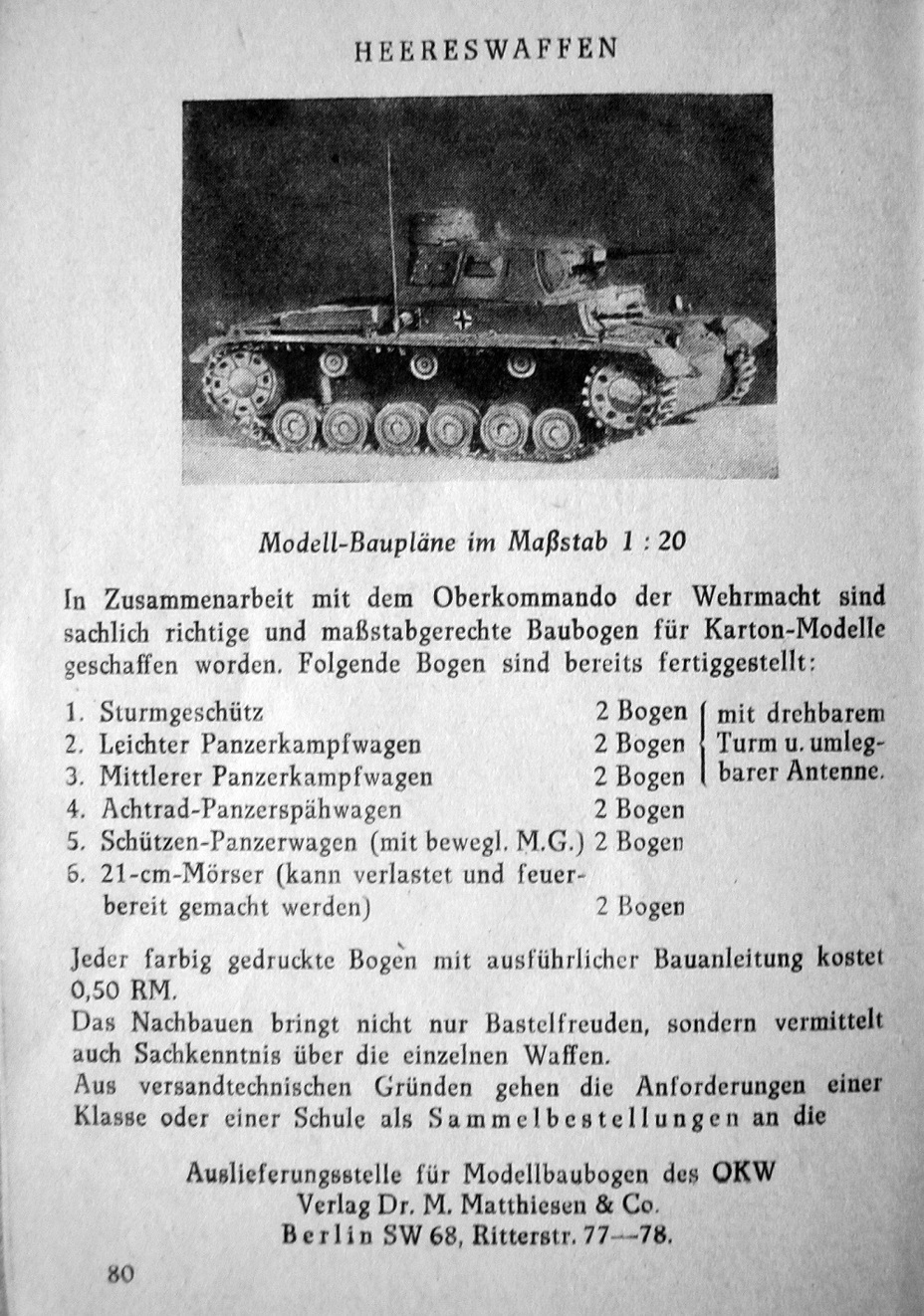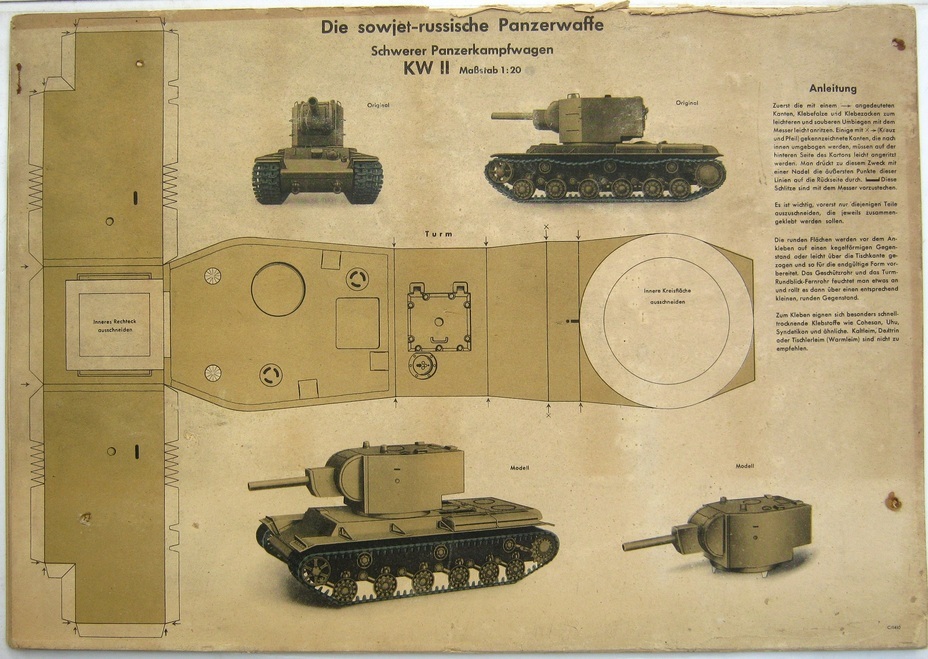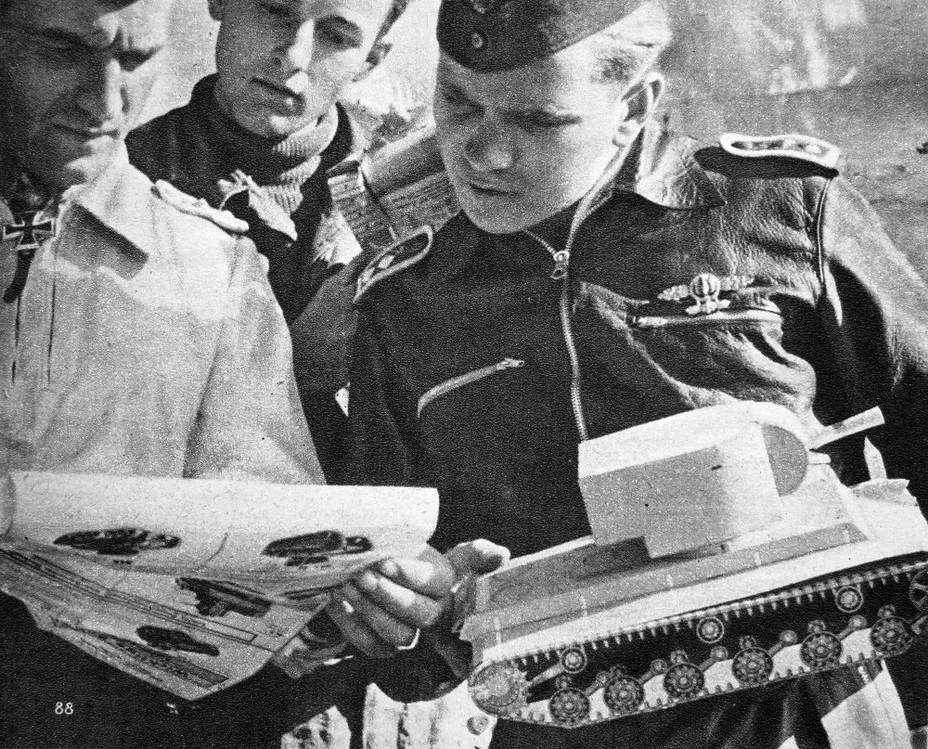Scale model building as it is known today has its roots in something that is distant from the world of hobbies. Everything started with the Navy: special models of prospective ships, known as «admiralty models», were built since time immemorial. The British were the creators of this tradition. From them, the world inherited popular scales: 1:16, 1:32, 1:48 and 1:72 all have naval origins.
Scale modelling as a hobby began to evolve in the 20th century. Its popularity today can trace its origins to the boom during WWII. Back then, this was not a hobby, but a practical military solution. In addition to wood, a material commonly used to build models of prospective tanks or ships, cardboard was also used. It is largely because of the cardboard models that modern scale models exist.

Cardboard was used for scale models since the second half of the 19th century. It had a number of drawbacks compared to wood and metal used for «admiralty» models. The result was, as a rule, not as precise and not as long-lasting. However, it was commonly available and accessible.
Paper models were also common in many countries in the early 20th century. These models were also used for military purposes. For instance, cardboard soldiers served as an accessible illustration of domestic and foreign military uniforms.
Paper models began to gain popularity in the USSR in the second half of the 1920s. The «Murzilka» children's magazine was one of the first to offer them. Using pages from the magazine, one could build a diorama of a farming cooperative or International Workers' Day demonstration. More complicated models like airplanes appeared later. The military had no direct connection with these models, but they accurately conveyed such «adult» themes as rank insignia of the Red Army.
A new page in the history of cardboard models began in the second half of the 1930s, when it was clear that the global situation was heating up. Pocket references, posters, and other printed materials for readers with brass buttons were common. Spain became a «battlefield» for cardboard models during its civil war. Both sides built models from cardboard. Thanks to the work of Galves and his colleagues from Grenada, these models were very widespread. Kits for building cardboard models of tanks began to be printed en masse, including the T-26, the most numerous tank in the Spanish Civil War.

The first German military paper model dates back to 1910. The pedantic Germans were also leaders in creating all manner of reference materials. Models gained popularity when the Treaty of Versailles prohibited the Germans from building their own tanks. The Germans build tank models on top of cars or even bicycles to use during exercises. In the late 1930, the German publisher Dr. M. Matthiesen & Co. KG became the center for «cardboard militarism». Cardboard models became one of the publisher's main products.

Unlike the Spanish, the Germans built their models in strict scales. For instance, aircraft were 1:33 scale, which remains popular with cardboard aircraft to this day. Tanks had a very large scale: 1:20. This allowed for a large and well detailed model that could be used as an educational aid. These models had a very high level of detail for their time.

The best known paper tanks produced by the Germans were Soviet KV-1, KV-2, and T-34 tanks. They were very precise recreations of the tanks captured in the summer of 1941 and delivered to Kummersdorf. This was the secret of the high degree of detail: its creators had access to the vehicles that they put on paper. The company didn't limit itself to trophies: models of German tanks, armoured cars, and aircraft were also produced. The modelling career of Dr. M. Matthiesen & Co. KG ended in the spring of 1945, but cardboard models continued their development. In addition to the «German» 1:20 scale, the smaller 1:25 scale gained popularity. However, models in this scale are not particularly small.
A German paper model adapted for the 1:35 and 1:50 scales can be downloaded here. This is a paper model of a T-34 tank that was published in Germany in 1942.
The Americans also appreciated the uses of military models, but they didn't bother with paper. H.A. Framburg & Co received an order for a series of models. They mostly consisted of 1:1200 and 1:500 scale ships, but also some 1:35 scale items. The models were built from plastic, cellulose acetate, wood, and other materials. The level of detail varied. These models had their advantages, however: they didn't need to be assembled, and they lasted much longer.
Translated by Peter Samsonov. Read more interesting tank articles on his blog Tank Archives.
Sources:






